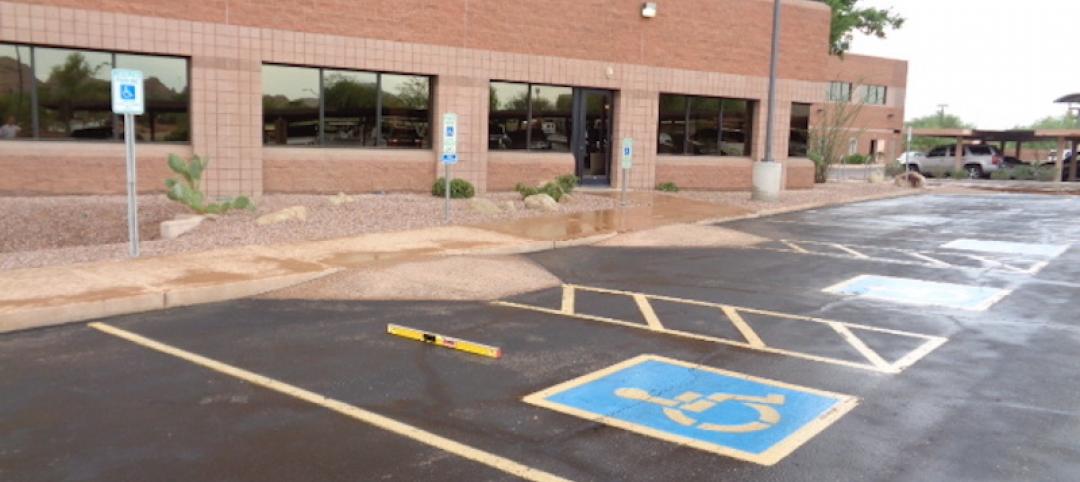There’s a saying that owners of older houses know all too well: “When you buy a home, you also buy a hardware store.” That wisdom is increasingly lost on new homebuyers, whose expectations of their domicile reveal a stunning degree of ignorance when it comes to matters of basic home repair and maintenance.
Data from the most recently completed American Housing Survey (AHS) provides statistical confirmation of this trend. The 2013 survey reports that owners of new houses (the AHS classifies new construction as buildings no more than four years old) spent zero dollars on monthly routine maintenance of their homes.
The specific nature of this collective cluelessness is evidenced by complaints homeowners have made about their eight-to-ten-year-old homes, charging that the residence is defective. Here are some excerpts:
- The wood material at the front elevation main entry door is badly sun damaged and deteriorating.
- Peeling paint is noted on the fascia board at the front elevation in multiple locations.
- On the front of the house, there is an iron detail at the gables. The iron detail is rusting.
- The tree at the front elevation is hanging over the roof. This condition will result in damage to the roof.
- Bird droppings have blocked the flow of a roof flashing.
- Several dead insects are noted on the floor at the garage.
- Mold is noted on the caulking for the shower pan at the master bathroom.
- In the master bathroom shower, the gasket at the enclosure has deteriorated.
What’s behind this perception that new houses are—or should be—maintenance-free? For first-time homeowners, the answer to this question may be predicated on their previous life as renters, where building supervisors took care of big and little repairs for tenants.
Or perhaps the owners have been covered by a home warranty in the past. Mandated by many states, these plans vary considerably in the extent of their coverage. Realtors typically advise their clients to read the warranty carefully, then contact the homebuilder in writing about the problem, and allow a reasonable amount of time for it to be remedied before pursuing legal options.
In the hands of a less-than-scrupulous litigator, minor claims such as the ones mentioned above have the potential to become major headaches for responsible contractors. By taking a proactive stance, the home-building industry can both educate the public about the importance of home maintenance and raise awareness within the construction community about protecting their professional rights and reputations.
Some of the risks posed to contractors by uninformed homeowners include repeated warranty claims, becoming enmeshed in construction-defect lawsuits, facing complaints made against their license(s), losing bonding capacity while involved in the dispute, and increased insurance premiums due to claim history. Regardless of their ultimate resolution, the expense of these claims—in both time and money—can be significant, as wading through the charges and culling out routine maintenance issues is a laborious process. Ironically, more effort is often spent explaining why a defect-allegation is a homeowner maintenance obligation, than addressing a true defect or workmanship issue.
Builders and contractors need to do a better job of bringing the topic of maintenance into the home purchase and remodel discussion. The goal is to set a reasonable expectation for the homeowner regarding the need to perform maintenance on the home throughout its life. (Think about a new car purchase and the efforts made by automobile manufacturers to provide buyers with care information and maintenance schedules.) Done in a responsible, balanced manner, construction pros can make clear that basic, routine upkeep can result in meaningful payoffs for homeowners:
- A well-maintained home is a safe home. Peeling carpeting or floor tiles can cause people to trip and fall; loose stair handrails invite accidents.
- A well-maintained home can save money. Ensuring that weather seals at windows and exterior doors is in good condition can help reduce heating and cooling costs. Fixing a dripping faucet or a running toilet will keep the water bill from rising.
- A well-maintained home is the best way to preserve—and increase—the value of the property. A neglected building will never recoup the owner’s investment in the house.
While those in the residential construction industry may be aware of publications on standards of workmanship, most homebuyers/homeowners are not. One example is produced by the National Association of State Contractors Licensing Agencies (NASCLA), a nonprofit group that is dedicated to better regulation of the construction industry to protect the health, welfare, and safety of the general public. Its “Residential Construction Standards” document lays out in clear, layman-friendly terms the acceptable standards of construction for every structural, mechanical, and finish aspect of the home. From insulation and drywall to roofing and plumbing and more, it identifies common defects/problems in the home, defines the accepted performance standards for each of them, and outlines the builder’s responsibility in resolving them. More importantly, the standards identify the homeowner’s responsibility for maintenance issues that commonly give rise to disputes. In this regard, the NASCLA standards provide the following statement:
“Many items related to deficiencies in the home are homeowner maintenance responsibilities. To assure themselves of long, comfortable use of their home and protection of their investment, homeowners should learn about and act on those maintenance responsibilities.”
—NASCLA Standards, Chapter 2, “Introduction to Construction Standards”
Several states also offer information on construction quality standards. For example, in Arizona, the Arizona Registrar of Contractors publishes “Workmanship Standards for Licensed Contractors.” Much of the language is similiar to the NASCLA standards, as it echoes standards of workmanship that contractors/builders should achieve and what maintenance actions homeowners should expect to perform over the first two years of new-home ownership and thereafter.
Educating the public about basic home maintenance benefits both homeowners and construction industry members alike. In addition to ensuring a sound residential structure, it can minimize adversarial relationships and inspire pride in quality work and a feeling of accomplishment on the part of both builders and homeowners. Builders should be proactive in making maintenance part of the home purchase process. Including discussion, maintenance schedules, and maintenance guides during the sale process may help set a better ownership expectation and reduce frivolous construction defect allegations.
About John T. Jozwick
John T. Jozwick, Esq. is Senior Vice President and General Counsel for Rider Levett Bucknall North America. With more than 35 years in the industry, John provides advisory services to owners, contractors, subcontractors, design professionals, sureties, and attorneys relating to construction projects and disputes. He serves clients as an expert witness on construction disputes, including construction defect matters. Additionally, John provides Alternative Dispute Resolution (ADR) services as a Mediator and Arbitrator of construction disputes, and provides construction dispute avoidance services as a Dispute Resolution Board (DRB) member or Project Neutral.
More from Author
Rider Levett Bucknall | Aug 14, 2023
Fast-tracking construction projects offers both risk and reward
Understanding both the rewards and risk of fast-tracking a project can help owners, architects, engineers, and contractors maximize the benefits of this strategy and can bring great reward on all fronts when managed properly.
Rider Levett Bucknall | May 31, 2022
Checking out: Tips for converting hotels to housing
Many building owners are considering repositioning their hotels into another property type, such as senior living communities and rental apartments. Here's advice for getting started.
Rider Levett Bucknall | Feb 14, 2022
How building owners and developers can get ahead of the next supply chain disaster
Global supply chain interruptions that started at the very beginning of the pandemic are still with us and compounding every step of the way. Below are a few proven tips on how to avert some of the costly fallout should we be faced with similar commercial disasters at any time in the future.
Rider Levett Bucknall | Jul 24, 2019
Design goooals for football stadiums: Lessons from the U.K. and the U.S.
Both professional soccer and football have vigorously pursued targeted global growth.
Rider Levett Bucknall | Apr 30, 2018
Following—and forecasting—the money: Financial modeling for project managers
To wait until there’s a problem affecting design and construction before consulting with a PM wastes valuable time when a project is at its most vulnerable point.
Rider Levett Bucknall | Jan 11, 2018
Harvesting energy and profits: A new approach to MEP cost analysis
In the course of providing cost estimating services, educating the client on making prudent choices is a high priority.
Rider Levett Bucknall | Sep 6, 2017
Following the money: G702 progress payment certifications
There is no single method of calculating progress payments, but the most common formula is the percentage of completion applied to the total contract price, less a retainage which is held by the owner until final acceptance of the project.
Rider Levett Bucknall | May 3, 2017
Avoiding trouble in paradise: Tips on building successfully in the Caribbean
The island setting itself is at the root of several of these disruptive assumptions.
Rider Levett Bucknall | Feb 8, 2017
Don’t leave your office or business vulnerable to drive-by lawsuits
Across numerous states, unscrupulous attorneys are filing hundreds of “drive-by” lawsuits that are founded on noncompliance with ADA regulations against businesses that often have no idea they have done anything wrong.
Rider Levett Bucknall | Nov 10, 2016
Prescription for success: Managing technology in the design of healthcare facilities
While the benefits of intelligently deployed technology are abundantly clear to both designers and healthcare end-users, it’s no simple task to manage the integration of technology into a building program.















